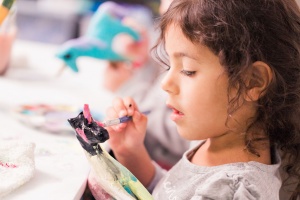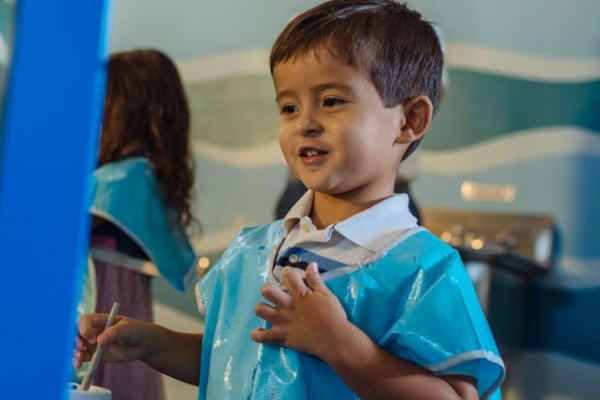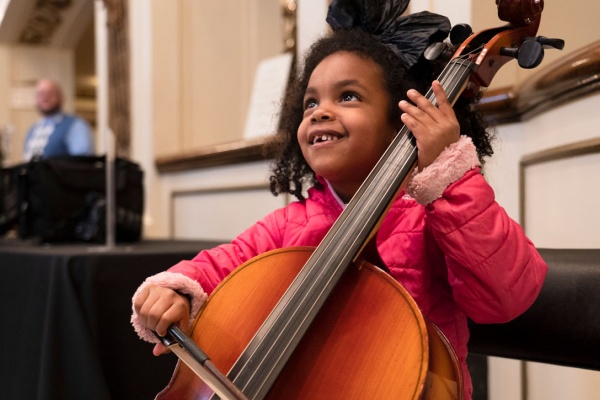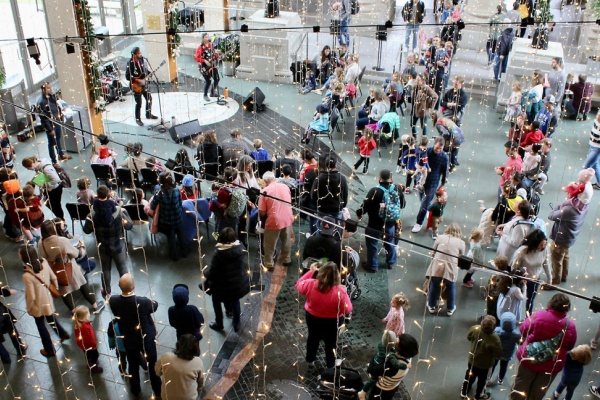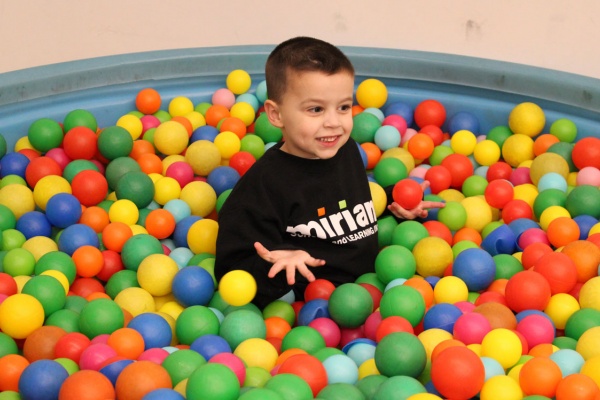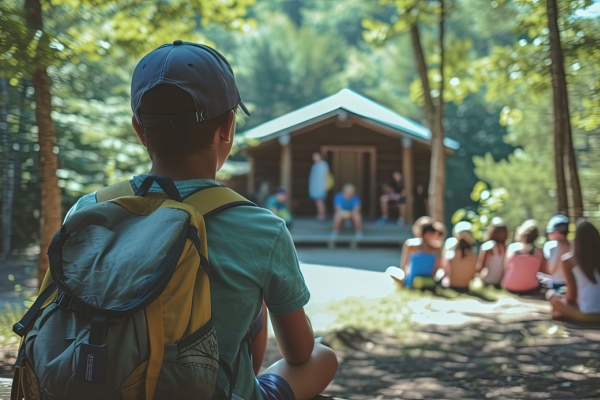

Six Ways to Help Your Child Mask Up and Stay Safer This School Year
Most of our kiddos have slipped on a mask every time they’ve left the house since COVID-19 first hit. While they’ve been in our eyesight and in our arm’s reach up until now, many of them (depending on the school district) are now headed back to the classroom without a parent by their side.
For moms and dads, the anxiety has already kicked in even though the first bell has yet to ring. We want to ensure our kids wear their masks to safeguard their teachers and fellow students, but we also don’t want to scare them or cause them unnecessary worry about germs lurking around the hallways. But with a little practice and the right fit, wearing a mask becomes second nature to kids, just like throwing on a helmet when jumping on their bike or squeezing into a lifejacket before hitting the water.
Getting your kids more comfortable with masks
First, let’s put the controversy to bed right now. According to Dr. Mia Henderson, a Washington University pediatrician at St. Louis Children’s Hospital, contrary to what you might see on social media or hear from friends, there are very few reasons why a child over age two should not wear a mask to help prevent the spread of COVID-19.
“Common diagnoses like asthma and cystic fibrosis should not preclude mask wearing,” she explained. “But a child who is physically unable to remove a mask or communicate any distress should not be masked. If you have additional questions, you should speak to your pediatrician.”
To help your kids adjust to this new normal, here are a few things to keep in mind:
1. Start a training regimen now. “When you’re heading out in public should not be the first time you ask young children to wear a mask—that’s asking for a meltdown,” says Dr. Henderson. She suggests the first big step is practicing at home first. “Start with shorter periods, like a few minutes, then slowly work your way to longer periods of wear.”
Another good option she recommends is to place a mask on your child’s favorite doll or stuffed toy and encourage your little one to wear their own mask at home on occasion to “match” their buddy.
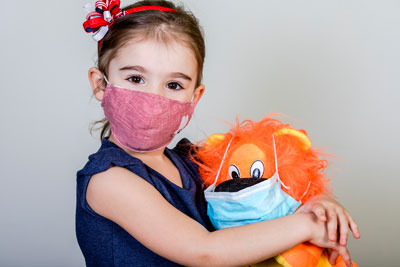
Try this: Place a mask on your child’s favorite doll or stuffed toy and encourage your little one to wear their own mask at home on occasion to “match” their buddy.
2. Appeal to your child’s caring side. My daughter has battled sensory processing disorder since she was little. Like, occupational therapy for years-level SPD, so when she started wearing a mask, I knew we were in for an argument. However, when I explained that her temporary discomfort protected the gentleman stocking our groceries, the nurses who cared for patients, and the health of her grandparents, it touched that heartfelt empathy naturally engrained in kids. I never heard another debate.
3. Find the glass slipper. None of us like wearing masks—they’re hot and itchy and uncomfortable. For kids with special needs, it can be even harder to find the right fit. Dr. Henderson notes that it all comes down to trial and error. “If possible, try to figure out what bothers your child about the mask—is it the rubbing behind the ears, the feel of the material, or something else? Then address that problem. If your child receives therapy services, talk to your providers about what they think might work for your individual kiddo.”
She has found that kids have the most luck with masks that have a bendable nose piece (which is a wire covered in fabric) that prevents the fabric from collapsing over a child’s nostrils when they breathe in. Masks with adjustable ties may be more comfortable than elastic, while a headband or baseball cap with buttons can prevent a mask from rubbing a child’s ears raw.
4. Remind your child how to wear their mask. According to Dr. Henderson, one of her biggest concerns, regardless of a person’s age, is our tendency to free our nose from our mask’s constraints. “Most of us primarily breathe through our noses, especially if our mouths are covered. If your nose is exposed, it’s almost the same as not wearing a mask at all!” Be sure to model good behavior for your child and explain the importance of keeping their mask in place.
5. Give your child a choice. At the onset of the pandemic, we as parents scrambled to throw together masks with bandanas and hair ties. Now there are thousands of places to find masks your kids will love, from big box stores to local St. Louis boutiques to fun animal-themed masks you can buy online from the Saint Louis Zoo. Invite your child to shop online for masks (multi-layered is best!) with you and give them a choice of which mask they’d like to wear each day. “Do you want to be Superman today? Or do you want to pretend to be Adam Wainwright and wear your Cardinals mask?”
6. Celebrate the superhero inside them. The COVID-19 pandemic has us all on edge, and it’s not going away anytime soon. A child can feel like their life is out of control, separated from their friends and loved ones, and unable to do the activities they love. Empower your child by explaining that wearing a mask is their superpower in the fight against germs, and when we work together, we can protect our own little Metropolis, wherever we live.
For a step-by-step guide on the proper way to wear a mask and for other COVID-19 topics related to children’s health, visit the St. Louis Children’s Hospital website.
Related: Super Heroes Wear Masks!
Photos: Stock

Metro East mom Nicole Plegge has written for STL Parent for more than 12 years. Besides working as a freelance writer & public relations specialist, and raising two daughters and a husband, Nicole's greatest achievements are finding her misplaced car keys each day and managing to leave the house in a stain-free shirt. Her biggest regret is never being accepted to the Eastland School for Girls. Follow Nicole on Twitter @STLWriterinIL




